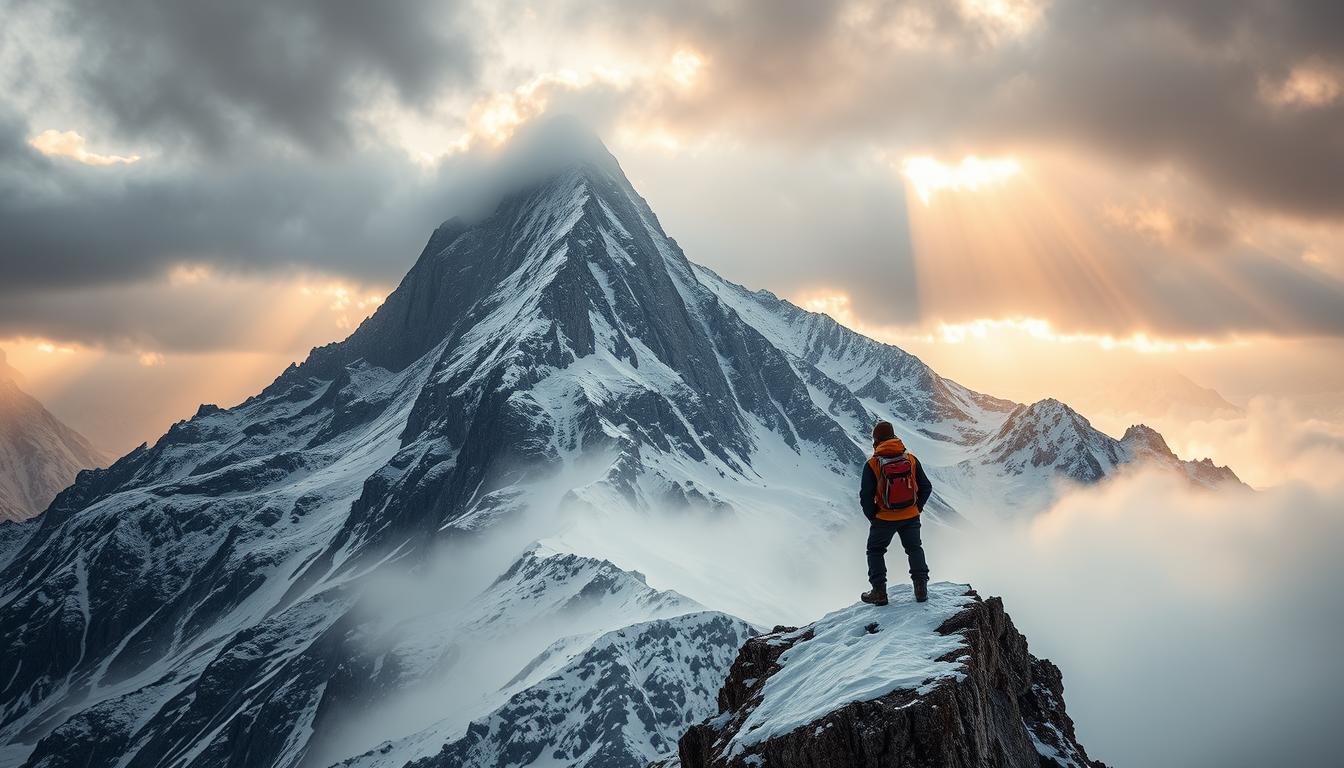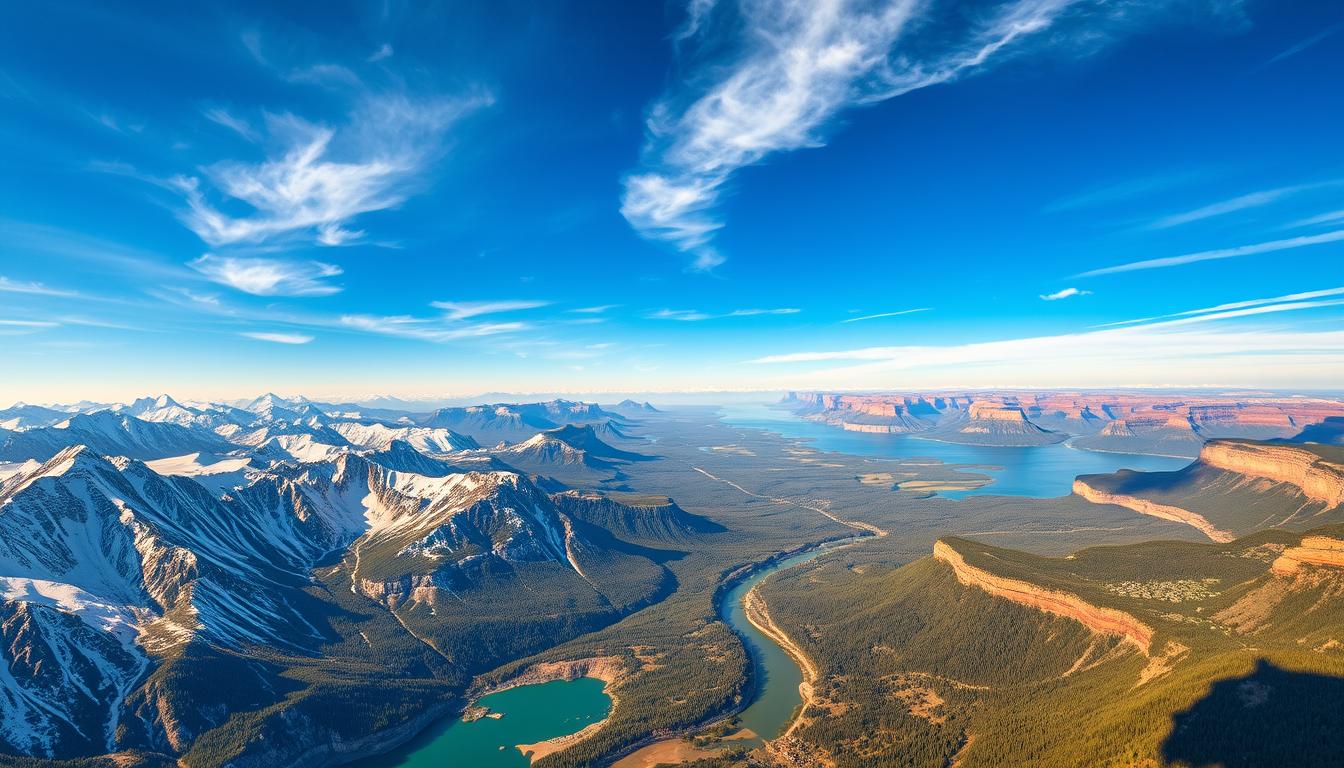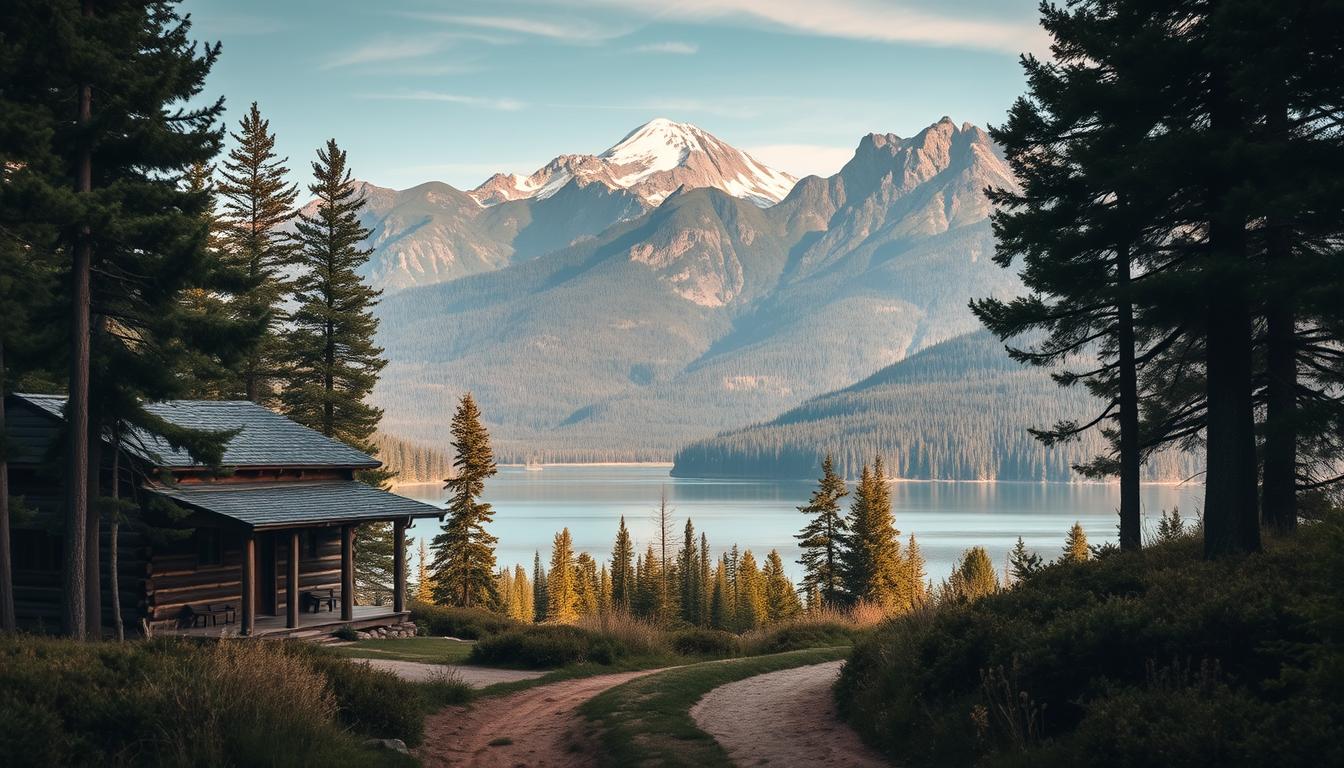Are you ready to push your limits and experience the ultimate thrill? For some travelers, a vacation isn’t complete without an extreme adventure. If you’re one of them, you’re in luck because we’ve got a list of heart-pounding experiences that will take your breath away.
From orbiting the Earth to diving in shark-infested waters, or getting up-close-and-personal with a gorilla, these bucket list adventures are not for the faint of heart. For those who crave adventure travel, we’ve curated a selection of the most exhilarating experiences around the globe. You can explore more of these thrilling activities in our guide on extreme adventures to add to your bucket.
Key Takeaways
- Experience the rush of extreme adventures around the world.
- Discover new and challenging experiences for adventure seekers.
- Explore the world’s most thrilling destinations for adventure travel.
- Get inspired to add new adventures to your bucket list.
- Learn about the most extreme adventures that will take your breath away.
Why Choose Extreme Adventures?
Extreme adventures offer a thrilling escape from the ordinary. Have you always dreamed of trying out some challenging adventure sport activity? We know that choosing the right adventure depends on your stamina and fitness. These adventures are not just about the thrill; they challenge our limits and push us beyond our comfort zones.
What Counts as an Extreme Adventure?
Extreme adventures include activities like skydiving, white water rafting, and sandboarding. These activities are high-risk and require specialized skills or training. Global adventures like climbing Mount Everest or trekking through Patagonia are also extreme due to harsh environments and physical demands.
- Skydiving over scenic landscapes
- White water rafting in rugged rivers
- Sandboarding down massive dunes
The Benefits of Pushing Our Limits
Engaging in extreme adventures can lead to personal growth, increased confidence, and a greater sense of accomplishment. By pushing our limits, we discover new strengths and capabilities. Overcoming challenges can be incredibly rewarding and lead to a more fulfilling life.
| Benefit | Description |
|---|---|
| Personal Growth | Develops new skills and perspectives |
| Increased Confidence | Boosts self-assurance through challenging experiences |
| Sense of Accomplishment | Fosters a feeling of achievement upon completing a challenging adventure |
Preparing for the Unknown
Preparation is key for extreme adventures. This includes physical training, understanding risks, and acquiring necessary skills or equipment. Proper preparation can significantly reduce risks and enhance the experience. Whether through guided tours or self-preparation, being ready is essential.
If you’re interested in learning more about preparing for your next extreme adventure or need services like Content Writing, Content Marketing, Digital Marketing, or Social Media Marketing, feel free to contact us at raja@cowrit.com.
Climbing the Heights: Mount Everest
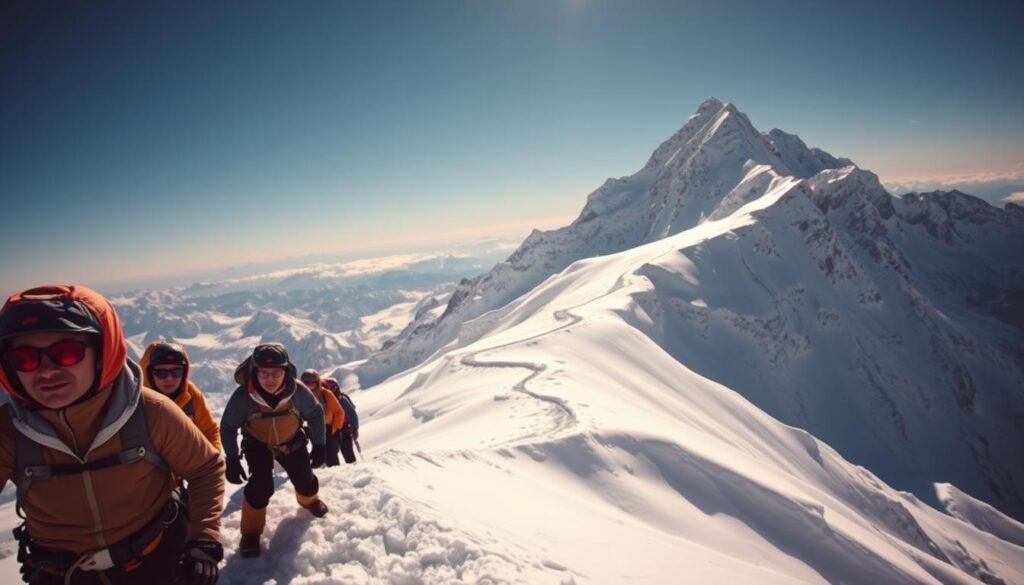
Climbing Mount Everest is a huge challenge that needs careful planning and strong will. It’s the tallest mountain in the world, standing at 8,848 meters (29,029 ft) high. Climbing it is a test for even the most seasoned adventurers.
Requirements and Preparation
To climb Mount Everest, you must be well-prepared. You need experience with high-altitude climbs, good physical shape, and the right gear. It’s also important to know the risks, like altitude sickness, harsh weather, and steep paths.
Key Preparation Steps:
- Physical training to build endurance
- Technical climbing skills
- Experience with high-altitude climbing
- Mental preparation for extreme conditions
What to Expect on the Journey
The trip to Mount Everest’s summit is long and tough, taking about 60 days. Climbers must get used to the high altitude, navigate icy paths, and face extreme cold. The climb has several camps, with the final push from Camp IV.
The climb is not just hard physically but also mentally. Climbers must face their fears and push through tiredness.
Safety Measures and Tips
Safety is key when climbing Mount Everest. Climbers should hire experienced guides, use the right gear, and keep an eye on the weather. It’s also important to watch your health and know the signs of altitude sickness.
| Safety Measure | Description |
|---|---|
| Guided Expedition | Hiring an experienced guide can significantly enhance safety |
| Proper Equipment | Using high-quality climbing gear and safety equipment |
| Weather Monitoring | Staying updated on weather forecasts to avoid climbing during adverse conditions |
For those thinking about this adventure, it’s important to be respectful and cautious. For more info on adventure travel services, contact us at raja@cowrit.com.
Diving Deep: The Great Barrier Reef
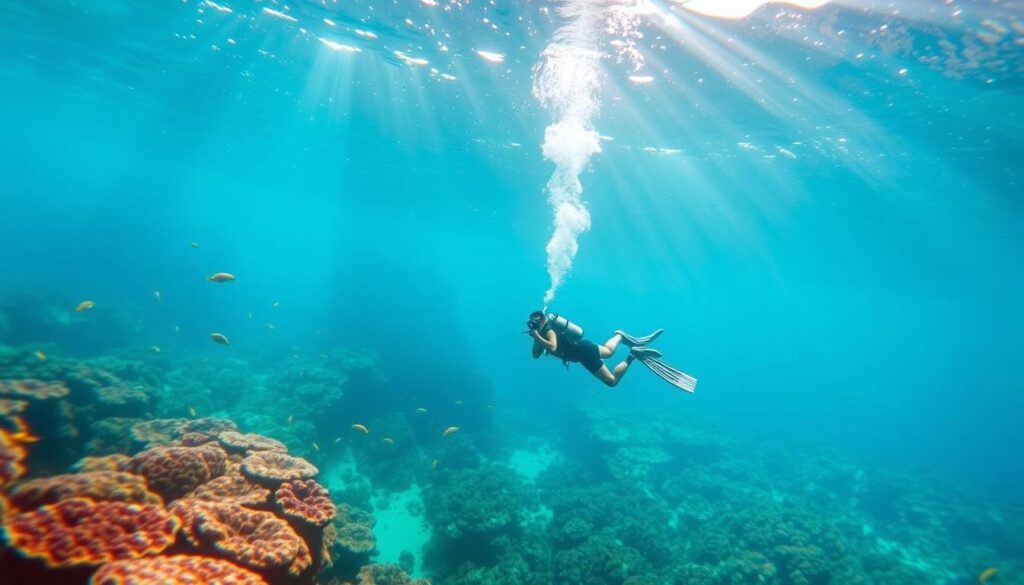
The Great Barrier Reef is a top spot for serious divers. It’s full of life and stunning coral. Exploring it is not just an adventure; it helps protect our oceans.
Planning Our Diving Expedition
Planning is key for a great dive in the Great Barrier Reef. We must pick the right time, considering weather and marine life. The dry season, from April to November, is best for calm seas and clear views.
Choosing a good diving operator is also important. They should focus on safety, the environment, and a great experience. Guides should know the reef well, helping us see the marine life and navigate.
Marine Life Diversity
The Great Barrier Reef is known for its diverse marine life. Diving here, we’ll see many species, from fish and turtles to sharks and rays. With over 1,500 fish species, 600 coral types, and more, every dive is different.
Some of the highlights include:
- Coral trout and parrotfish, which are common in the reef.
- Sea turtles, often seen swimming or resting on the sea floor.
- Manta rays and reef sharks, adding excitement to our dives.
Environmental Considerations
Enjoying the dive, we must protect the reef. We should not touch the coral, not feed the fish, and control our buoyancy. This helps avoid damaging the reef.
Supporting conservation is also important. We do this by choosing eco-friendly tours and respecting protected areas. This way, we help keep the reef healthy for future adventures.
For tips on planning your dive and helping marine conservation, contact us at raja@cowrit.com. We offer expert advice and services.
Racing the Rapids: White Water Rafting in Costa Rica
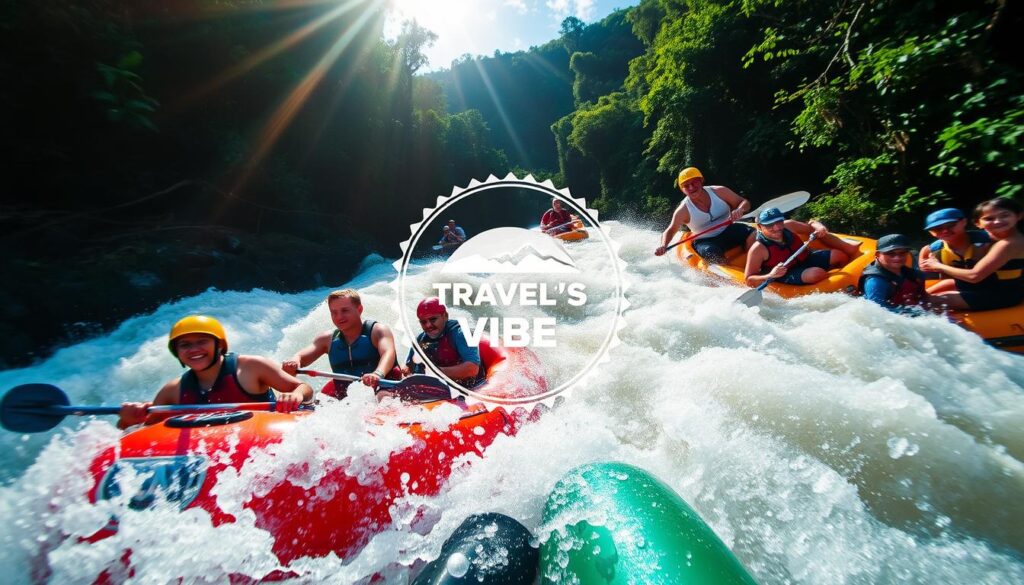
White water rafting in Costa Rica is an exhilarating adventure. It combines stunning natural beauty with thrilling rapids. As we navigate through the rugged waters, the lush rainforests and vibrant wildlife surround us, making the experience unforgettable.
Best Seasons for Rafting
The rainy season, from May to November, is the best time for white water rafting in Costa Rica. During this time, the rivers are swollen, and the rapids are intense. The dry season, from December to April, offers calmer waters. It’s ideal for those seeking a less intense experience.
Key factors to consider when planning your trip:
- River conditions
- Weather forecasts
- Tour operator schedules
Top Locations and Rivers
Costa Rica has many rivers perfect for white water rafting. Some top locations include:
- Reventazon River: Known for its Class III-IV rapids, this river offers an exhilarating experience.
- Pacuare River: With its stunning scenery and challenging rapids, Pacuare is a favorite among rafting enthusiasts.
- Naranjo River: This river offers a more relaxed rafting experience, suitable for families and beginners.
Essential Gear for Rafting
To ensure a safe and enjoyable rafting experience, having the right gear is key. Some essentials include:
- A well-maintained raft
- Helmets and life jackets
- Paddles and wetsuits
- Waterproof bags for personal belongings
For those eager to try white water rafting in Costa Rica, we suggest contacting reputable tour operators. They can provide guidance and equipment. If you’re interested in learning more about our content marketing services or have any inquiries, please don’t hesitate to reach out to us at raja@cowrit.com.
The Thrill of Skydiving: Over the Swiss Alps
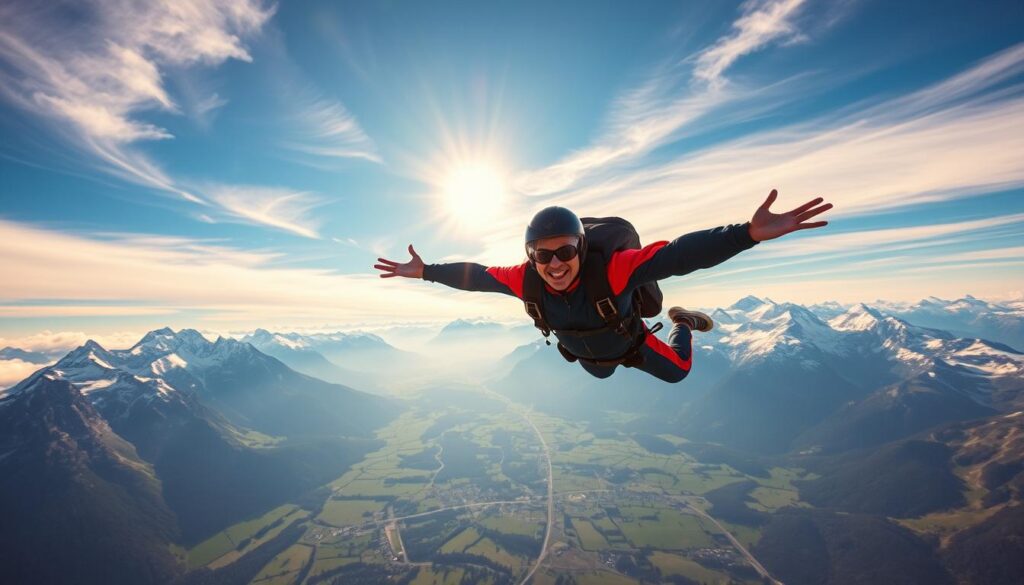
Skydiving over the Swiss Alps is a mix of excitement and stunning views. It’s a top choice for those who love extreme adventures. The scenery, with its mountains and valleys, is breathtaking.
Selecting the Right Skydiving Operator
Choosing the right skydiving company is key. We look for those with a strong safety record and experienced instructors. Make sure they have certifications from groups like the United States Parachute Association (USPA).
Consider the company’s experience, the quality of their gear, and the instructor-to-student ratio. A reputable company ensures a safe and fun experience.
Preparation and Training
Before jumping, we get detailed training. This includes learning about safety, equipment use, and emergency plans. Many places offer tandem skydiving for beginners, where an instructor guides us.
The training prepares us for the jump. It covers everything from takeoff to landing. This helps us feel more at ease and enjoy the experience more.
The Skydiving Experience
Jumping from the plane is thrilling. The Swiss Alps’ beauty unfolds below, with the wind whipping past. This is an adventure we won’t forget. After the freefall, we float down, taking in the views.
For those who seek adventure, skydiving over the Swiss Alps is more than a thrill. It’s a mix of adventure, beauty, and personal challenge. Whether it’s our first time or not, the memory of this jump will last forever.
Exploring the Wilderness: Patagonia Trekking
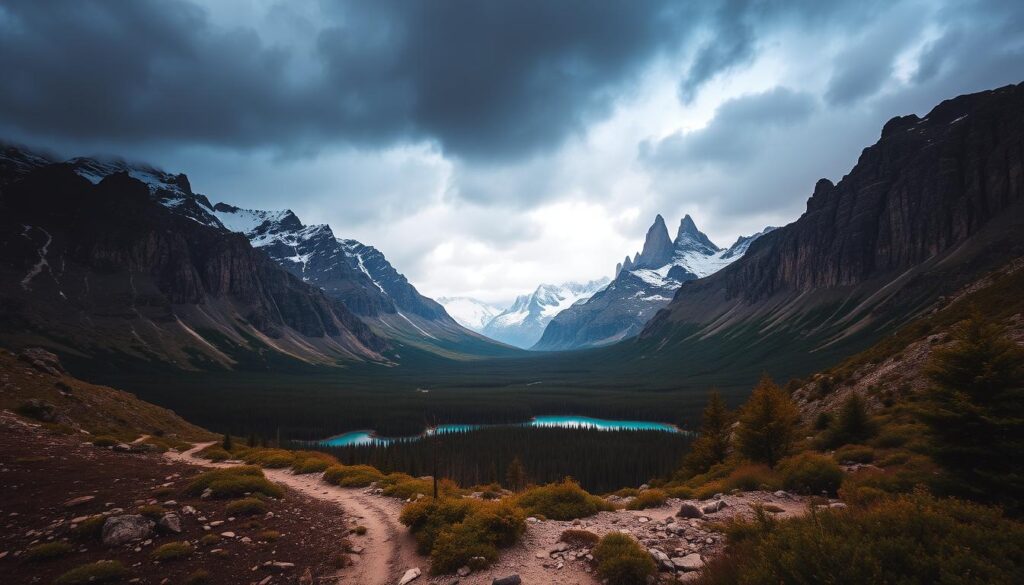
Patagonia calls to those who love adventure. It’s a vast area in Argentina and Chile, famous for its stunning landscapes. You’ll see towering mountains, peaceful valleys, and glaciers.
Patagonia has trails for every adventurer. Let’s look at some of the best trails for extreme adventures.
Ideal Trails for Adventure Seekers
The Torres del Paine Circuit is a top choice for trekkers. It offers views of granite peaks, rivers, and valleys. The Fitz Roy trek is also popular, with its tough terrain and beautiful views.
If you want fewer people around, try Los Glaciares National Park. It has many trails with amazing scenery. Each trail gives a unique experience, showing off Patagonia’s beauty.
What to Pack for Our Journey
Getting ready for a trek in Patagonia needs careful planning. The weather can change quickly, so pack layers. You’ll also need sturdy boots, a good backpack, and camping gear.
Having a detailed packing list is key for a great trek. Here’s a basic guide:
| Item | Description | Importance Level |
|---|---|---|
| Waterproof Jacket | Protects against rain and wind | High |
| Hiking Boots | Sturdy, waterproof boots for trekking | High |
| Sleeping Bag | Insulated bag for camping | Medium |
| First Aid Kit | Basic medical supplies | High |
Wildlife We Might Encounter
Patagonia is known for its wildlife, not just landscapes. You might see guanacos, pumas, and many birds. It’s important to respect and understand wildlife for a safe trek.
If you’re interested in more global adventures, there are many resources. They can help you prepare for your next journey.
Conquering the Desert: Sandboarding in Namibia
Sandboarding in Namibia is an adventure unlike any other. It offers dunes as tall as the world’s best ski resorts. Whether you’re a seasoned snowboarder or an adventure seeker, Namibia’s vast landscapes are waiting for you.
Best Areas for Sandboarding
Namibia boasts some of the world’s most stunning sand dunes. It’s a dream come true for sandboarding fans. The top spots include:
- The majestic dunes of Sossusvlei, a must-see for sandboarders.
- The towering dunes near Sesriem, with breathtaking views and thrilling rides.
- The lesser-known but exciting dunes in the NamibRand Nature Reserve.
Safety Gear We Should Use
Safety is key when sandboarding. Essential gear includes:
- A sturdy sandboard made for desert terrain.
- A helmet to protect against head injuries.
- Knee and elbow pads for extra protection.
- Comfortable, protective clothing and goggles to shield against sand and wind.
Wearing the right safety gear can greatly reduce injury risk. It also makes our sandboarding experience better.
Tips for First Timers
Here are some tips for beginners:
- Start on smaller dunes to get used to the sand and your board.
- Practice your stance and balance before tackling bigger dunes.
- Always check your equipment before heading out.
- Consider joining a guided tour to learn from experts.
With these tips and the right safety gear, we’re ready to enjoy the thrill of sandboarding in Namibia’s amazing desert landscapes.
Biking Through the Mountains: Moab’s Slickrock Trail
Moab’s Slickrock Trail in Utah is a top pick for extreme biking fans. It’s tough, requiring skill, endurance, and a love for adventure.
Trail Difficulty and Experience Level
The Slickrock Trail is known for its technical challenges and physical demands. Riders must have advanced biking skills and be okay with steep slopes and rough terrain. Prior experience with tough mountain biking trails is key to conquer this trail.
What Gear We Need
Right gear is vital for a safe and fun ride on Moab’s Slickrock Trail. You’ll need a strong mountain bike, a helmet, knee pads, and the right clothes. Don’t forget to carry enough water, snacks, and a basic tool kit for any bike problems.
Scenic Views and Pit Stops
The Slickrock Trail is famous for its stunning views. You’ll see sandstone formations and vast desert landscapes. There are many stops where you can rest and enjoy the views. These spots are great for a break and taking amazing photos.
For those who love adventure and biking, Moab’s Slickrock Trail is a must-try. It’s perfect for those who want to test their skills or just enjoy the thrill of biking. When planning your next adventure, make sure to include Moab’s Slickrock Trail. It’s an experience you won’t forget.
Adrenaline Rush: Zip Lining in Costa Rica
Imagine flying through Costa Rica’s jungle canopy on a zip line. Feel the wind rush past and the thrill of adventure. Zip lining in Costa Rica mixes nature’s beauty with the excitement of extreme adventures. As we glide through lush landscapes, we see stunning views and feel an unforgettable rush.
Popular Zip Lining Locations
Costa Rica has many zip lining spots, each with its own charm and challenges. Some top places include:
- Mistico Park in Nuevo Arenal, a mix of adventure and relaxation.
- Selvatura Park near Monteverde, famous for its extensive canopy tour.
- Adventure Park in Quepos, known for its thrilling long zip lines.
Unique Features of Each Zip Line
Each zip line tour in Costa Rica has its own special features. These range from the zip line’s length and height to the scenery and wildlife you can see. For example, Selvatura Park’s canopy tour has a Tarzan swing and a superman zip line, providing a variety of thrills.
| Location | Zip Line Features | Scenic Highlights |
|---|---|---|
| Misteco Park | Multiple zip lines, Tarzan swing | Jungle canopy, Lake Arenal views |
| Selvatura Park | Canopy tour, Superman zip line | Cloud forest, wildlife viewing |
| Adventure Park | Long zip lines, night tours available | Jungle scenery, ocean views |
Safety Protocols to Remember
Safety is key when zip lining. Costa Rica’s operators follow strict safety rules, using top-notch gear and guides. Before we start, we should:
- Check the safety gear and equipment.
- Listen to the guide’s instructions carefully.
- Make sure we’re properly harnessed before starting.
For more on adventure travel services, including content and digital marketing, contact us at raja@cowrit.com.
Conclusion: Embrace the Adventure
Exploring the world’s extreme adventures can change our lives. From climbing Mount Everest to sandboarding in Namibia, these experiences are unforgettable. We’ve seen the excitement of skydiving over the Swiss Alps and the thrill of white water rafting in Costa Rica.
We’ve also marveled at the beauty of trekking through Patagonia. These adventures push us to our limits and help us discover new strengths.
Life-Changing Experiences
Extreme adventures let us challenge ourselves and find new abilities. Whether we’re seasoned adventurers or just looking for something new, these global experiences are a chance to see the world’s most amazing places.
The Allure of Adventure Travel
Adventure travel is more than just excitement. It’s about diving into different cultures, meeting new people, and making memories that last. When thinking about our next adventure, we can find inspiration in many options.
From zip lining in Costa Rica to biking through Moab’s Slickrock Trail, the choices are endless. So, which extreme adventure will you try? Let us know and start planning your next global adventure today. For more information on making your adventure a reality, contact us at raja@cowrit.com.
